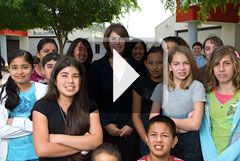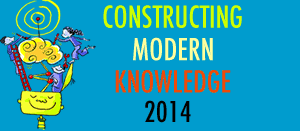California Kids Use — and Teach — Digital Storytelling
Veteran fourth-grade teacher Don Kinslow often hears colleagues say they would use technology if they had the time to get training. At Parkview Elementary School, in Chico, California, he has found a practical solution to this dilemma: He engages students as technology mentors.
This article appears in the September issue of Edutopia magazine as part of their stimulus funding series, “High Tech at Low Cost”, and is online here.
The story captures the essence of what many schools see when they include GenYES students in their technology outreach to teachers and the whole community. Don says, “It’s a simple idea, but it’s had huge outcomes.”
One of Kinslow’s students, for instance, was consistently reluctant to speak in class. For a book report, she narrated a digital story. “Her voice was clear. Her ideas were well organized,” Kinslow says. “For some kids, this was the first time they’d ever heard her talk.”
And we all know, this isn’t about saving money, it’s about giving kids experiences that change lives, either by being a GenYES student who finds her voice, or a student in a classroom where the teacher feels supported enough to try technology for the first time.
Part of the fun of this job is meeting teachers like Don Kinslow. He’s got great ideas and he tries things, lots of things. He’s given me some great stories to tell! If you’d like to read more about Don and his students, they are also one of the detailed case studies in my Student Support of Laptop Programs article. Their school uses laptops on carts and the GenYES students are part of the team a teacher can count on when they use the laptops for small student groupwork, digital storytelling across all grades and subjects, and special request projects for teachers.
By the way, don’t miss the article’s author, Suzie Boss, in the Edutopia blog lineup called Spiral Notebook.
Sylvia


